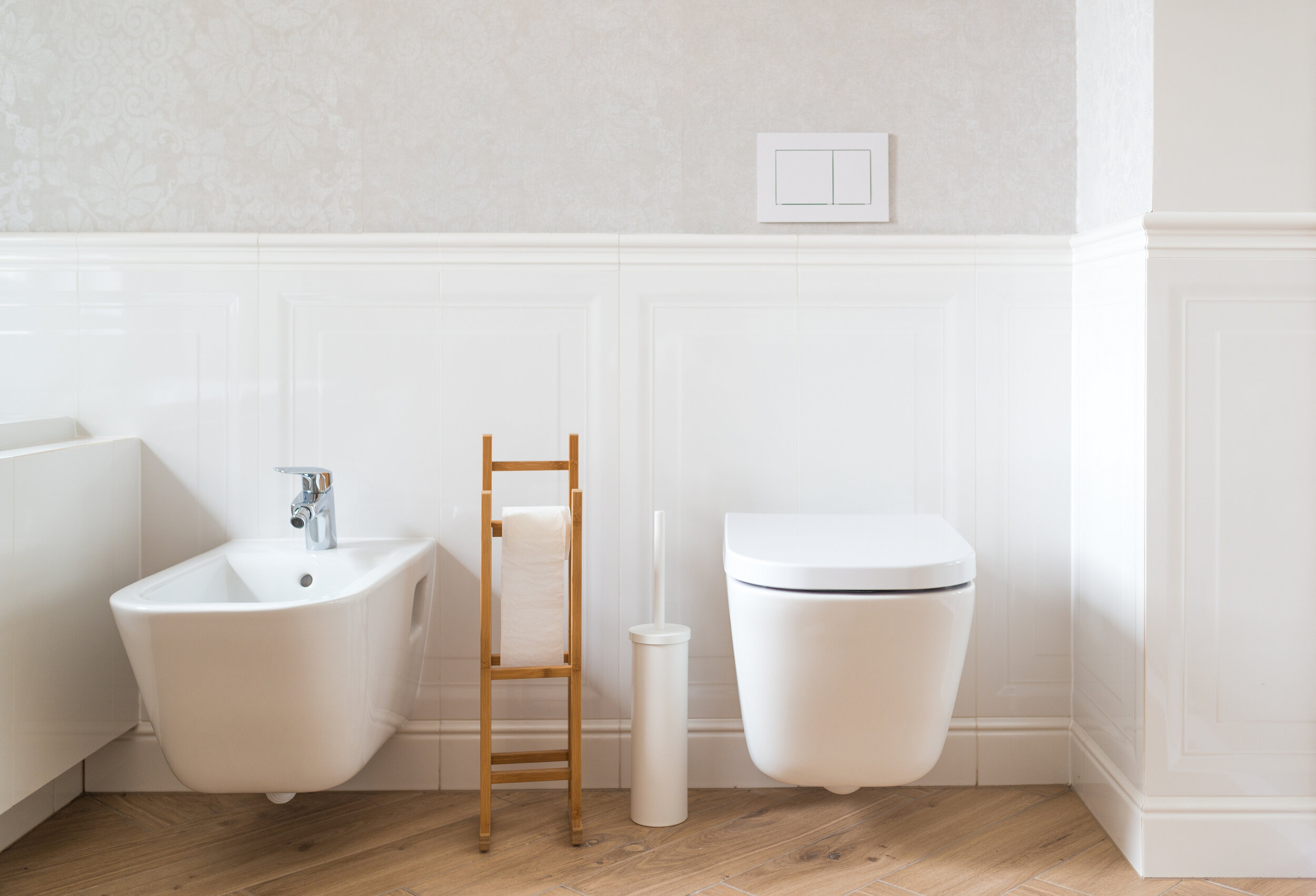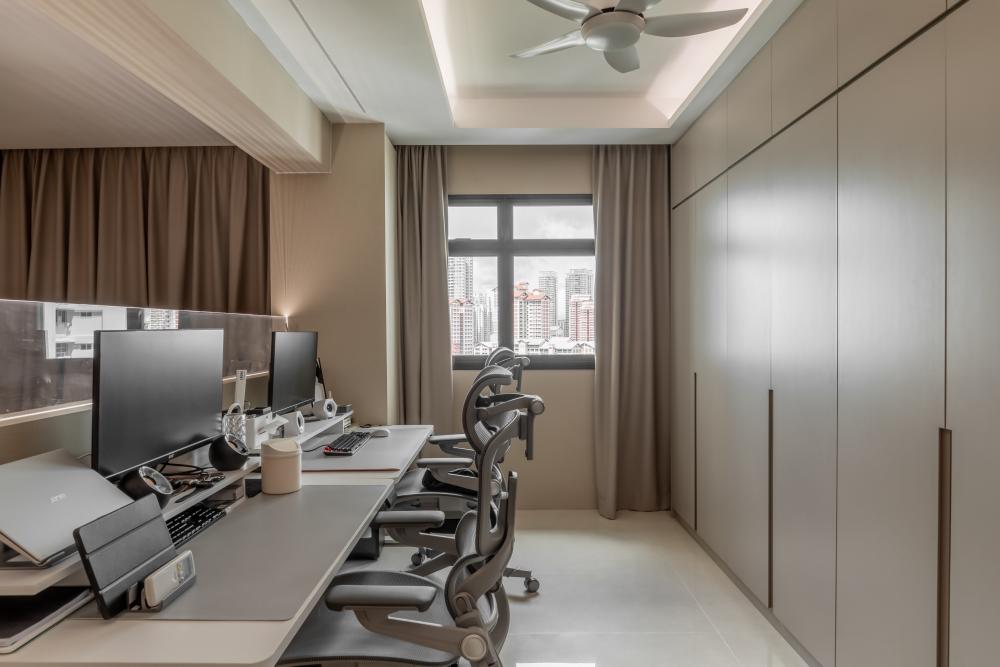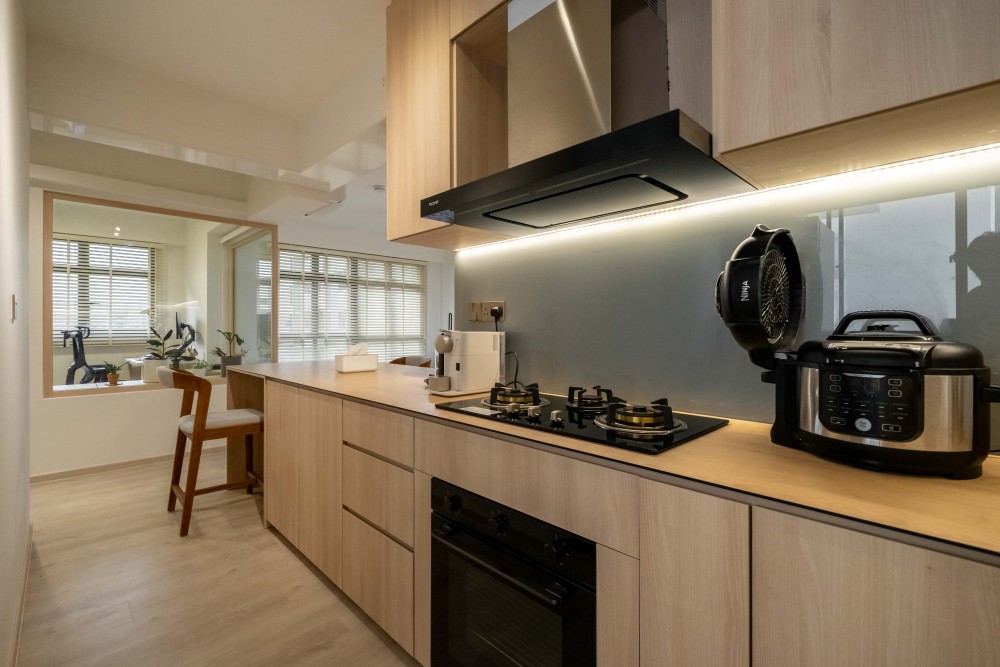How To Choose The Right Flooring For Your Home
Choosing the right flooring for your home is a big decision that can affect the look, feel, and functionality of your space for years to come.
Here’s the thing – with so many options available, it can be overwhelming to know where to start.
In this guide, we’ll take you through the most popular flooring options for Singaporean homes, as well as their pros and cons.
Whether you’re looking for a low-maintenance option, something durable for high-traffic areas, or a material that will add warmth and character to your space, we’ve got you covered.
Popular Flooring Options In Singapore
There are several popular types of flooring in Singapore, each with its own set of benefits and drawbacks. Let’s walk through the most common options:
Vinyl flooring
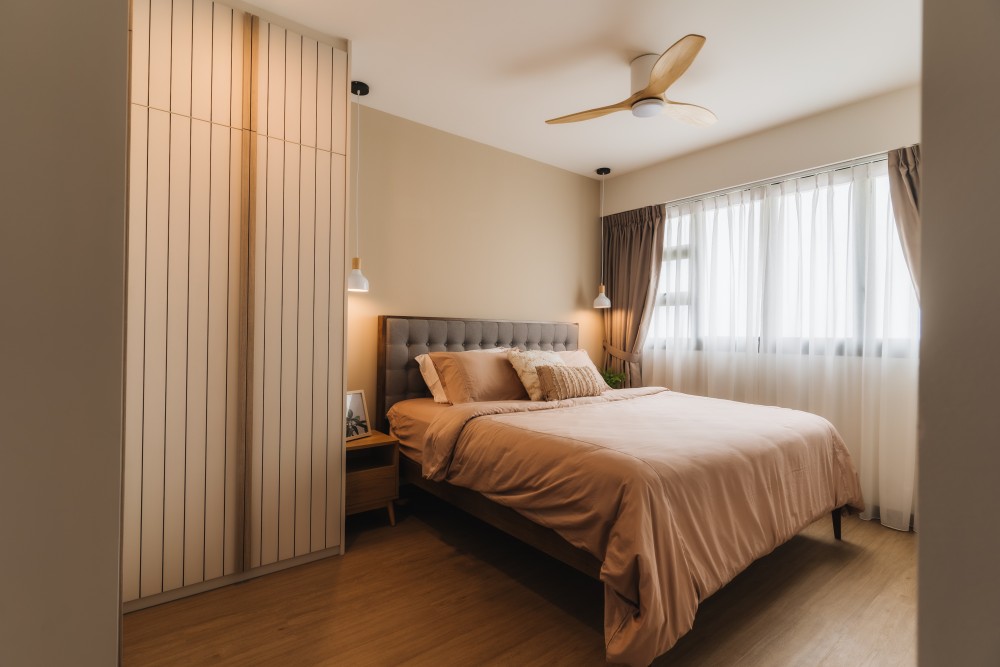

402A Fernvale Ln ($44,500) by Livspace
Vinyl flooring is an affordable option for many homeowners, particularly those who are looking for a low-maintenance and durable flooring option. It’s extremely popular amongst young couples who have just gotten their BTO flats, and are trying to furnish their flat without breaking the bank.
This type of flooring is made from synthetic materials, typically PVC or a combination of PVC and other additives, and is available in a wide range of colours, patterns, and textures.
There are two main types of vinyl flooring: sheet vinyl and vinyl tiles or planks. Sheet vinyl is a single sheet of vinyl that is rolled out and glued down to the subfloor, providing a seamless and easy-to-clean surface. Vinyl tiles or planks, on the other hand, are individual pieces of vinyl that are designed to mimic the look of other flooring options, such as hardwood or stone. Vinyl tiles and planks can be installed using a variety of methods, including peel-and-stick, interlocking, or glue-down.
Some folks say that vinyl tiles or planks give you the best of both worlds – they look like hardwood / stone floors, but are more durable and cheaper. However, it really boils down to the specific vinyl tiles that you choose – there’s a huge range with different price points, and the cheaper ones can look more plasticky, and fail to mimic the hardwood / stone look authentically.
Now, onto the pros and cons of vinyl:
One of the main benefits of vinyl flooring is its durability. It is resistant to scratches, dents, and stains, making it a great choice for high-traffic areas of the home, such as entryways, kitchens, and bathrooms. Additionally, vinyl flooring is water-resistant and easy to clean, making it a great option for households with pets or young children.
Another benefit of vinyl flooring is its versatility. It is available in a wide range of colours, patterns, and textures, from classic woodgrain to bold geometric designs. Vinyl flooring can be used to create a variety of different looks and styles, from traditional to modern and everything in between.
How about vinyl’s disadvantages? One of the downsides is that vinyl can be prone to fading or discolouration over time, particularly if exposed to direct sunlight. Additionally, vinyl flooring can be more prone to scratching or scuffing than other flooring options, such as hardwood or tile.
Laminate flooring
Laminate flooring is a type of flooring that’s made from a composite of wood fiber and resin materials that are fused together under high heat and pressure. The resulting planks or tiles are then covered with a photographic layer that mimics the look of real wood, stone, or tile.
Here are the pros and cons of using laminate flooring:
Like vinyl flooring, laminate flooring is highly affordable, making it a great option for homeowners on a budget. Additionally, laminate flooring is easy to install, as it can be snapped together with a tongue-and-groove locking system, which eliminates the need for glue or nails.
Laminate flooring is also durable and easy to maintain. It is resistant to scratches, stains, and wear and tear, so it’s perfectly fine to use laminates in high-traffic areas of the home. Additionally, laminate flooring is water-resistant, which makes it suitable to use in kitchens, bathrooms, and other areas of the home that are exposed to moisture.
However, one of the downsides of laminate flooring is that it can be noisy underfoot, as it does not absorb sound as well as other flooring options, such as carpet or cork. Additionally, laminate flooring can be more prone to fading and discolouration over time, particularly if it is exposed to direct sunlight.
In comparing laminate and vinyl flooring, the two differ in terms of their durability and their degree of water resistance.
While vinyl flooring is prone to scratching or scuffing, it’s able to withstand impacts and heavy traffic. However, laminate flooring is resistant to scratches and stains, but it can chip or dent if heavy objects are dropped on it.
When it comes to water resistance, laminate flooring is water-resistant to some degree, but can become damaged if it is exposed to standing water or moisture for an extended period of time. Vinyl flooring, on the other hand, is more water-resistant.
Tile flooring
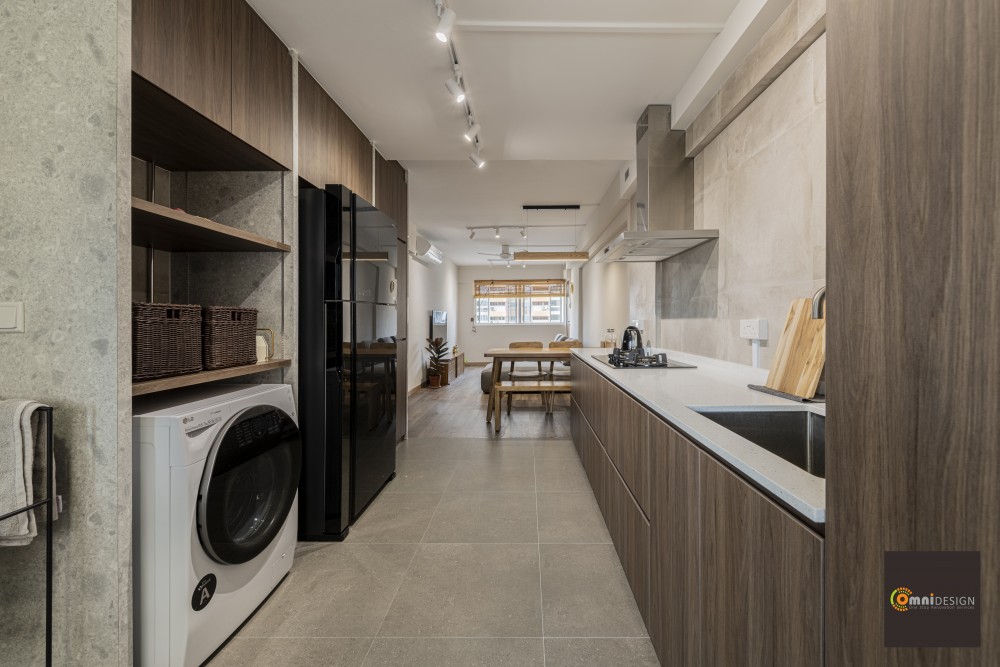

King George’s Avenue ($33,000) by Omni Design Pte Ltd
Tile flooring is commonly used in areas of the home that are exposed to moisture, such as bathrooms and kitchens. Tile flooring is made from a variety of materials, including ceramic, porcelain, natural stone, and glass, and is available in a wide range of colours, patterns, and sizes.
When choosing your tiles, keep in mind that the texture of the tile will affect how easy it is to clean. For instance, you might want to choose natural stone tiles for your bathroom to create a more organic look – but keep in mind that if the surface of the tile is craggly and uneven, this means that it will trap dirt easily and be more difficult to clean.
Now, let’s discuss the pros and cons of tile flooring:
One of the main benefits of tile flooring is its durability. In particular, ceramic and porcelain tiles are particularly durable and resistant to scratches, stains, and wear and tear, making them a great choice for high-traffic areas of the home. Additionally, tile flooring is water-resistant and easy to clean – this means it’s suitable for households with pets or young children.
However, one of the downsides of tile flooring is that it can be cold and hard underfoot, making it uncomfortable to stand on for long periods of time. Additionally, tile flooring can be more difficult to install than other flooring options, such as hardwood or vinyl.
PS: Not sure what’s the difference between ceramic and porcelain tiles?
Both these tiles are made from clay, but porcelain tiles are fired at a higher temperature than ceramic tiles. Due to this, porcelain tiles are harder, more durable, and less porous than ceramic tiles (this means they’re more resistant to water and stains). Porcelain tiles are also typically more expensive than ceramic tiles.
Marble flooring
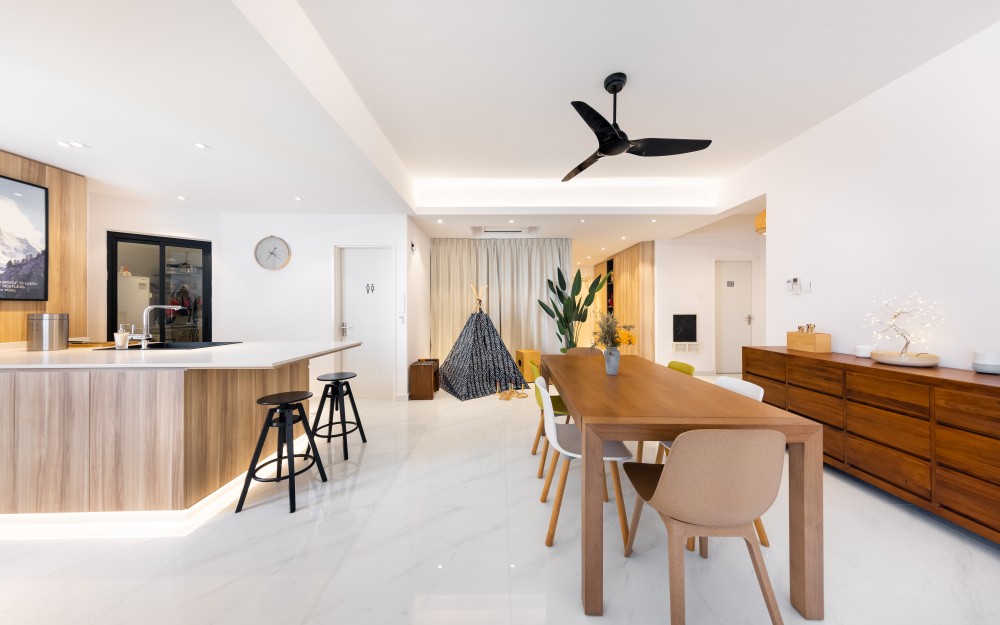

Mandarin Gardens ($75,000) by U-Home Interior Design Pte Ltd
Marble flooring is a luxurious and high-end flooring option that’s made from natural stone. It certainly doesn’t come cheap, but it can add value and sophistication to your home.
Looking at the pros and cons of marble flooring:
One of the main benefits of marble flooring is its elegance – it has a timeless look that can add sophistication and luxury to any room. Since marble is available in a wide range of colours and patterns (including white, beige, gray, and black, with varying degrees of veining and colour variation), this makes it easy to find a marble flooring option that complements the style and décor of your home.
Another advantage of marble is that it’s incredibly durable and can last for decades with proper care and maintenance. Marble is resistant to scratches, stains, and wear and tear, and it’s heat-resistant as well.
Finally, marble flooring can make floors cooler, especially when compared to other types of flooring such as hardwood. This is because marble is a natural stone and has good thermal conductivity, which means it can absorb and release heat more easily than other flooring materials. Since temperatures are always high in Singapore, some folks like that marble flooring provides some natural cooling to their homes!
On the flipside, one of the main drawbacks of marble is that it is porous and can be prone to staining if it is not sealed properly. Additionally, marble flooring can be slippery when wet, which can be a safety hazard in areas such as bathrooms or kitchens.
Of course, we also have to acknowledge that marble flooring is also one of the most expensive flooring options available. The cost of installation and materials can be significantly higher than other types of flooring, such as hardwood or tile.
Cement screed
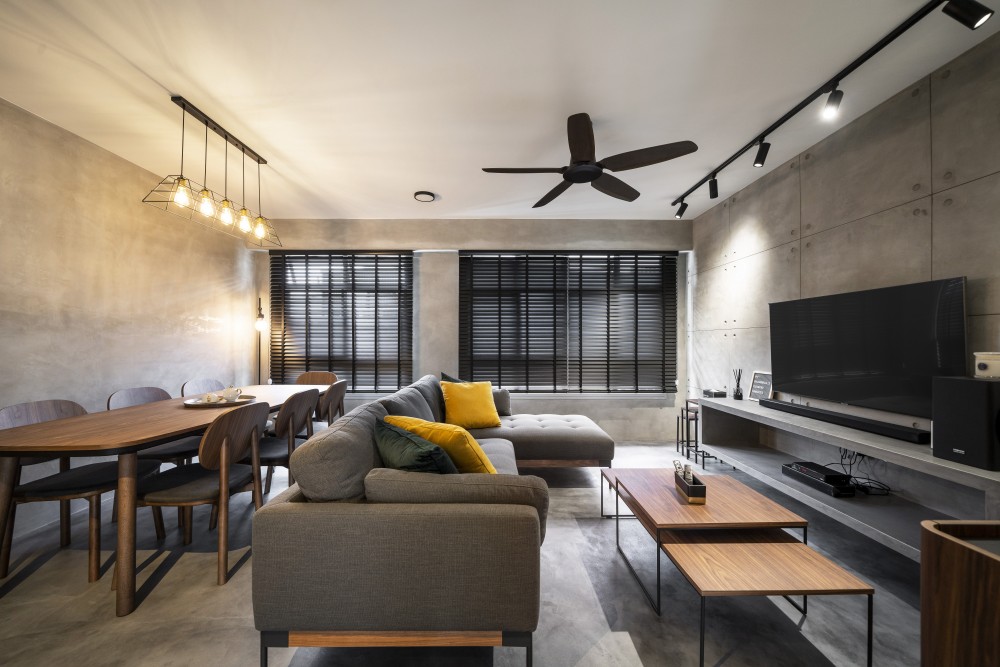

612B Tampines Greenview ($50,000) by Livspace
Cement screed is a type of flooring that is made from a mixture of cement, sand, and water. It is often used in industrial or minimalist interior designs because of its raw and natural look. Cement screed flooring is also a popular choice for modern and contemporary homes because of its sleek and stylish appearance.
Here are some pros and cons of cement screed:
One of the main benefits of cement screed flooring is its durability. Cement screed is known for its high strength and resistance to heavy foot traffic, making it suitable to use in high-traffic areas. It is also resistant to moisture and water.
That aside, cement screed flooring is also highly customisable. It can be dyed or stained to create different colours and effects, or polished to achieve a shiny and smooth surface. Additionally, it can be textured or stamped to create unique patterns and designs. If you want to create a completely unique look for your home, and create a home that’s truly one-of-a-kind, cement screed is a great way to do that.
Another benefit of cement screed flooring is the fact that it is low maintenance. It is easy to clean and does not require frequent polishing or refinishing. Regular sweeping and mopping are usually sufficient to keep it looking clean and well-maintained.
Now, moving on to the disadvantages of cement screed – one key drawback is that it can be difficult to install, and may require professional installation to achieve a smooth and even surface. Cement screed will never look perfectly uniform – it will always have some level of natural imperfections, such as minor irregularities. While these imperfections can add to the natural charm and character of the floor, they may not be suitable for those who prefer a perfectly uniform look.
Another disadvantage of cement screed is that it can be prone to cracking or chipping if it is not installed properly, or if heavy objects are dropped on it. This can lead to unsightly damage that can be difficult and costly to repair.
Hardwood flooring
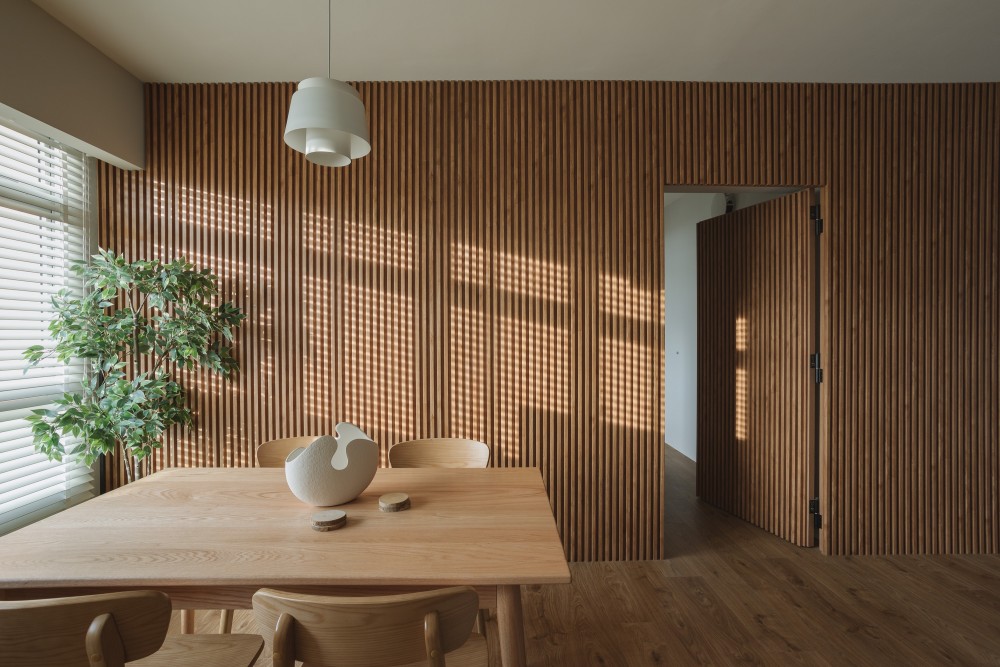

528C Costa Ris ($51,000) by The Interior Lab Pte Ltd
Hardwood flooring is a popular and timeless choice for many homeowners. It is made from real wood that is sourced from a variety of tree species, including oak, maple, cherry, and walnut. Many homeowners like this flooring for its natural beauty, durability, and long-lasting value.
There are several types of hardwood flooring available, each with its own unique look and properties. Solid hardwood flooring is made from a single piece of wood and is available in a variety of widths, thicknesses, and finishes. Engineered hardwood flooring, on the other hand, is made from multiple layers of wood that are bonded together, providing greater stability and resistance to moisture and temperature changes.
If you’re wondering where parquet flooring (perhaps the most popular hardwood flooring in Singapore) factors into the mix, parquet is a specific subset of hardwood flooring. More specifically, parquet is made from small pieces of wood that are arranged in a geometric or mosaic pattern.
Now, let’s talk about the pros and cons of hardwood flooring.
One of the benefits of hardwood flooring is its durability. When properly maintained, hardwood flooring can last for decades, providing a durable and low-maintenance flooring option for your home. It is also hypoallergenic, making it a great choice for those with allergies or respiratory issues.
On the flip side, hardwood flooring does require some maintenance to keep it looking its best. Regular sweeping and vacuuming can help remove dirt and debris, while a damp mop can be used to clean up spills and stains.
It’s also important to avoid exposing hardwood flooring to excessive moisture or temperature changes, as this can cause warping or cracking. As such, you wouldn’t want to use hardwood in your kitchen, and expose it to potential spills or cooking fumes.
Factors To Consider When Choosing Flooring
When choosing flooring for your home, there are several factors to consider. Here are a few key things to keep in mind:
Lifestyle
Different types of flooring have different levels of durability and maintenance requirements, and are hence suitable for different activities. Think about how you’ll be using each room in your home, and about your family’s unique needs and requirements.
The goal is to choose a flooring material that is both functional and aesthetically pleasing, and that will stand up to the demands of your daily life.


For example, if you have young children or pets, you may want to choose a flooring material that is durable and easy to clean, such as vinyl or laminate flooring. These types of flooring are generally resistant to scratches and stains, and can be easily wiped clean with a damp cloth or mop.
If you have a busy household with high foot traffic, you may want to choose a flooring material that is durable and low maintenance, such as ceramic or porcelain tiles. These types of flooring are resistant to scratches and stains, and can be easily cleaned with a damp mop or sponge.
Lastly, if you have allergies or sensitivities to dust or allergens, you may want to choose a flooring material that is hypoallergenic and easy to clean, such as hardwood or vinyl flooring. These types of flooring are generally non-porous, which means they are less likely to trap dust, pollen, or other allergens.
Budget
Flooring can be a significant investment, so it’s important to consider your budget before making a decision.
By setting a budget for your flooring, you can quickly narrow down your options and find a material that works for you. It’s important to keep in mind that while you may be able to save money on the initial cost of materials, choosing a lower quality or less durable flooring option can end up costing you more in the long run due to maintenance, repairs, and replacement.
Generally speaking, laminate and vinyl floors are the most affordable, cement screed and tile floors are in the mid-tier range, and hardwood and marble floors tend to be more expensive.
That said, keep in mind that there can be huge ranges in prices even within a specific category.
Take vinyl, for example. Generally, the cheapest vinyl options are those that are sold in large rolls. These lower-priced vinyl options are often thin and have a limited colour or design selection. They may also have a less durable wear layer, making them more susceptible to scratches, scuffs, and stains.
On the other hand, higher quality vinyl options, such as luxury vinyl tiles and luxury vinyl planks, are generally more expensive but offer a wider range of design options, greater durability, and better performance. These higher-end vinyl products often feature a thicker wear layer that provides better resistance to wear and tear, as well as enhanced protection against water and stains.
Here’s a quick summary:
| Feature | Cheap vinyl | Higher quality vinyl |
|---|---|---|
| Thickness | Thin | Thicker |
| Design options | Limited colours and patterns | Wide range of colours, patterns, and designs |
| Mimics natural look | May not mimic natural materials well | Can mimic the look of natural materials |
| Installation | May be difficult to install | Often has built-in backing or adhesive |
| Durability | Less durable, prone to wear and tear | More durable, resistant to scratches/stains |
Aesthetics
The flooring you choose can have a big impact on the overall look and feel of your home. Consider the style and colour of your existing decor, as well as your personal taste, when choosing flooring.
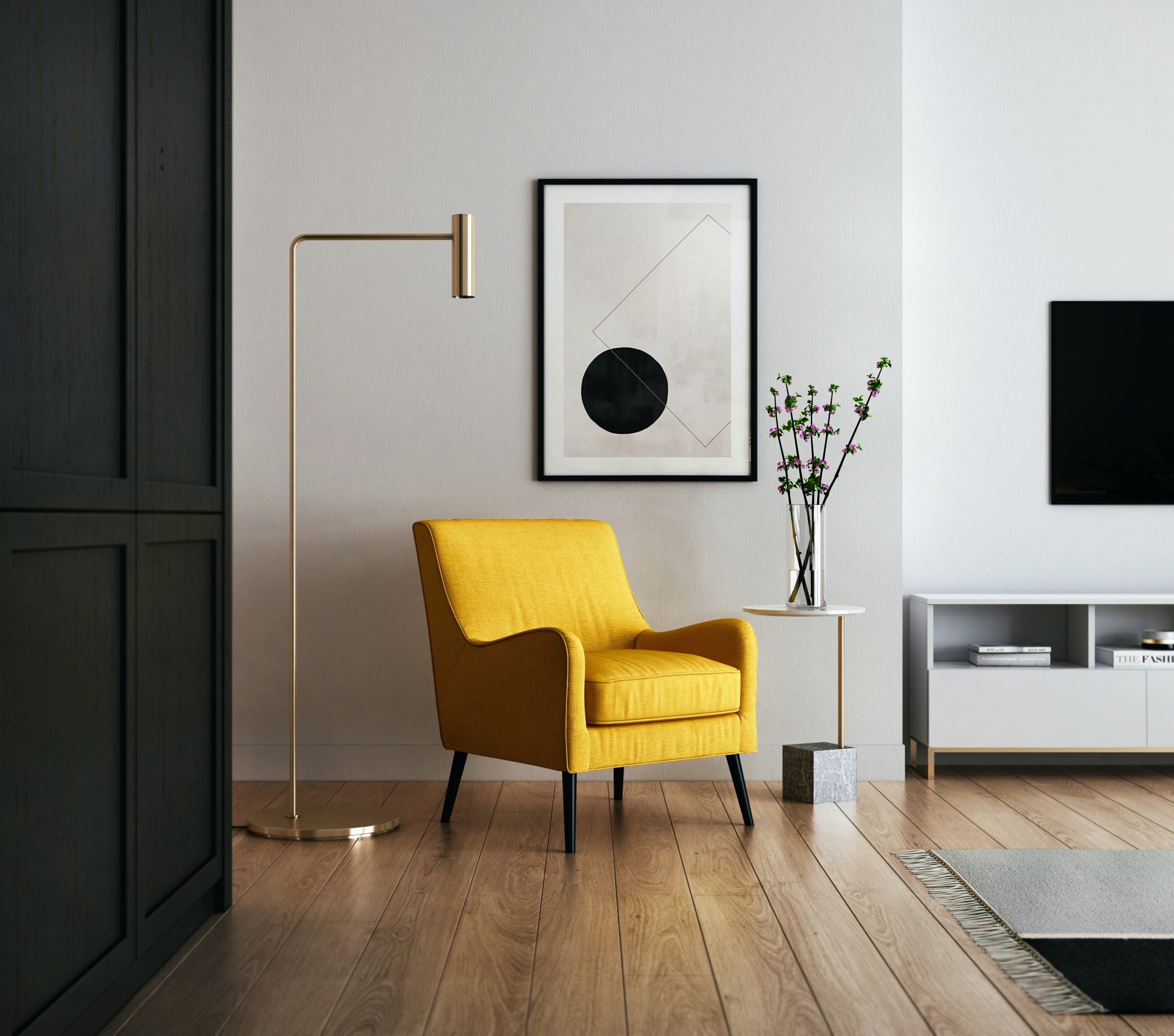

Here are some examples of how aesthetics can influence the choice of flooring:
In terms of style, the style of flooring you choose can set the tone for the entire room. For example, a hardwood floor can create a warm and inviting atmosphere, while a polished concrete floor can give a space an industrial or modern feel.
Next, colour is an important consideration when selecting flooring. Lighter colours can make a space feel more open and airy, while darker colours can create a cozy and intimate atmosphere. For example, a light-coloured tile or laminate may be a good choice for a small bathroom, while a dark hardwood floor could work well in a large living room with high ceilings.
Colour aside, think about patterns as well. Some flooring options, such as tile and hardwood, offer a range of pattern options. Patterns can add visual interest and create a unique design statement. For example, a herringbone pattern on a hardwood floor can add a classic and sophisticated look to a room.
Finally, the texture of flooring can also impact the overall aesthetic. Smooth, glossy surfaces can create a sleek and modern look, while textured or matte finishes can create a more rustic or natural feel. For example, a textured stone or tile floor can add a sense of depth and dimension to a space. (Although, like we previously said – these are harder to maintain and keep clean!)
Choosing The Right Flooring For Each Room
Based on the typical usage of each room, here are some ideas on what to choose for flooring:
Living room
The living room is typically a high-traffic area where you’ll spend a lot of time entertaining guests and relaxing with your family. If you have the budget to do so, consider investing in hardwood flooring for a warm and welcoming atmosphere. If you’re looking for a more budget-friendly option, laminate or vinyl flooring can also be a good choice.
Kitchen
The kitchen is a high-moisture area that can be prone to spills and stains. Tile flooring is a popular choice for its durability and ease of maintenance, while vinyl flooring can also be a good option due to its water resistance.
Bathroom
The bathroom is another high-moisture area where water resistance is key. Tile flooring is a popular choice here, again, due to its durability and water resistance, and vinyl flooring works as well.
Bedroom
The bedroom is a space where you’ll want to prioritize comfort and coziness. Hardwood or laminate flooring work well here, and you can add rugs and carpets in order to create a softer, more inviting atmosphere.
A Final Word On Choosing The Right Flooring For Your Home
You’ve made it all the way to this ultimate guide… good job! 😉
To recap, choosing the right flooring for your home is an important decision that can have a big impact on the overall look and feel of your space.
You’ll want to really put some thought into the decision – don’t just go with what your friends or ID suggest, without evaluating the options. After all, if you change your mind or regret your decision, it isn’t easy to change your flooring with a snap of your fingers.
By considering factors like your lifestyle, budget, and personal taste, as well as the specific needs of each room, you can (hopefully!) make a decision that you’ll be happy with for years to come.
The key is to choose a flooring option that meets your needs and fits into the overall aesthetic of your home at the same time. Happy shopping!
Want to check out home renovation projects for more inspiration? Browse flooring design ideas on Hometrust, or click the button below to get connected with expert designers!
Renovating soon? Let Hometrust recommend the best interior designers.
If you are reading this, you are probably wondering how you can create your dream home.
Here’s the thing, everyone’s needs and requirements for their home renovation is different. A designer that may work for someone else, may not quite work for you.
At Hometrust, we’re here to help match top rated designers, recommended by past homeowners to you through our data-driven and matching algorithm.
Whether you are looking for partial renovation or a full fledge overhaul, we’ll be able to recommend you top designers to match your renovation requirements and lifestyle.
Recommendations and free and you can simply start by helping us understand your needs below!
Get RecommendationsRenovate safe!
The Hometrust Team

